Interview: Film Director Nicolas Roeg | reviews, news & interviews
Interview: Film Director Nicolas Roeg
Interview: Film Director Nicolas Roeg
The veteran director doesn't believe in sticking to the script
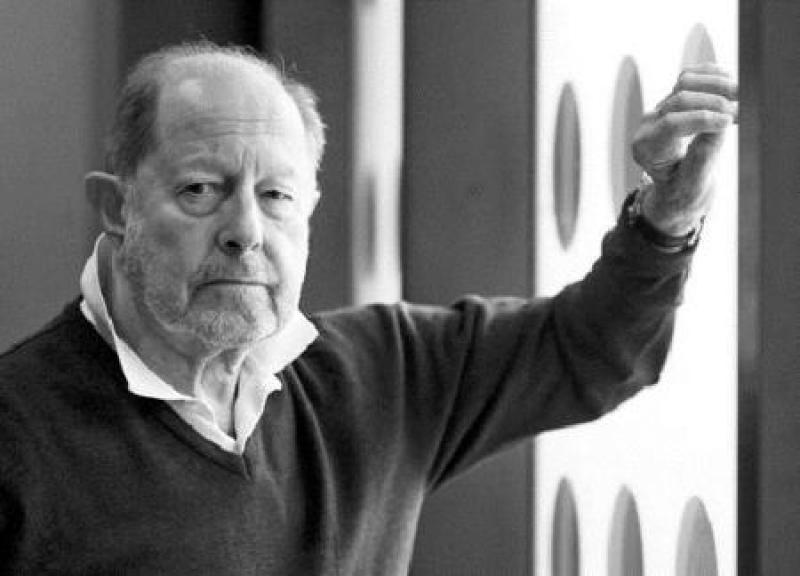
There is something rather bloody-minded and heroic about Nicolas Roeg’s films with their fractured narratives, macabre imagery and extremes of sex and violence which place him, along with film-makers such as Ken Russell and Roger Corman, within a very particular but thrilling seam of dark English Romanticism.
Now aged 82, Roeg, who was born in London, is responsible for some of the most provocative images in cinema – alien sex in The Man Who Fell to Earth (1976), a teenage Jenny Agutter getting her kit off in the Australian outback in Walkabout (1970) and - possibly the most famous of them all – the tiny figure, clad in red, scuttling around the Venetian alleyways in Don’t Look Now (1973), shortly to be released on Blu-ray.
I met Roeg in March at his distributor’s office 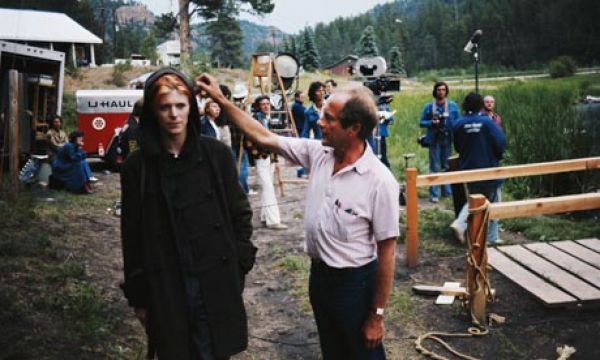 with strict instructions from his PR that, on Roeg’s request, we are only to talk about The Man Who Fell to Earth, which was about to be released on Blu-ray, and Don’t Look Now. (Pictured right, Roeg and David Bowie on the set of The Man Who Fell to Earth.)
with strict instructions from his PR that, on Roeg’s request, we are only to talk about The Man Who Fell to Earth, which was about to be released on Blu-ray, and Don’t Look Now. (Pictured right, Roeg and David Bowie on the set of The Man Who Fell to Earth.)
I have to admit to being a little frustrated by this condition - firstly, I have had a very strong attachment to Bad Timing, Roeg’s film that charts the obsessive sexual relationship between two seriously unhinged individuals, played by a chilly and supercilious Art Garfunkel and the sublimely voluptuous Theresa Russell, since I first saw a scratchy VHS version in the Eighties, and I've been looking forward to discussing it in minute detail with the director. Secondly, I am totally nonplussed by The Man Who Fell to Earth, which isn’t a particularly unusual reaction – Roeg’s films have always provoked a polarity of response, even amongst his admirers. However, as it turns out, we don’t have enough time to even mention it during the interview.
As luck would have it, I arrive early for my appointment with Roeg to find him already waiting in reception so I introduce myself and decide to grab the opportunity to explain, somewhat earnestly, my attachment to Bad Timing. Until I saw it again recently, I half-suspected that my enthusiasm had been nothing more than a youthful fad, a sop to my inner drama queen, and that its power to affect me had probably diminished. But on the contrary, watching it again, several – OK, many – years later, I felt it had an even greater resonance. Roeg is smiling encouragingly - or so I like to think - and I was just getting into my stride when the PR arrives and escorts us to the meeting room to begin the interview proper.
Watch the trailer for Bad Timing
Don’t Look Now was Roeg’s third outing as a director – he made Performance in 1968 but it was not released until 1970, and Walkabout in 1971. However, he was already well established in the film industry, having worked his way up from clapperboy to becoming the cinematographer on films such as François Truffaut’s Fahrenheit 451 (1966) and John Schlesinger’s Far From the Madding Crowd (1967). His contribution to films such as Richard Lester’s Petulia (1968), with its flashbacks and flashforwards, anticipated his future career as a director.
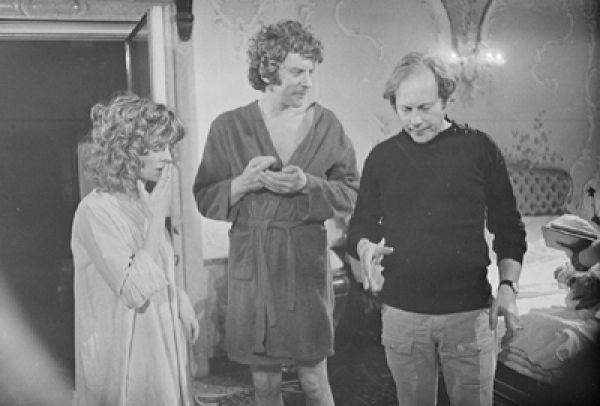 Adapted from Daphne du Maurier’s novella of the same title, Don’t Look Now, a psychological horror film, tells the story of a couple, John and Laura Baxter, played by Donald Sutherland and Julie Christie, (picured left, on set with Roeg) who are in Venice following the death of their daughter, where John Baxter is restoring a church. Laura Baxter is befriended by two elderly sisters, one of whom, to John Baxter’s disgust, claims to be clairvoyant and tells them that their dead daughter is trying to warn them of danger. It is by far Roeg’s most popular and accessible film - it recently came top of Time Out magazine’s poll of the best British films of all time, and at the time Sutherland and Christie were huge box-office attractions.
Adapted from Daphne du Maurier’s novella of the same title, Don’t Look Now, a psychological horror film, tells the story of a couple, John and Laura Baxter, played by Donald Sutherland and Julie Christie, (picured left, on set with Roeg) who are in Venice following the death of their daughter, where John Baxter is restoring a church. Laura Baxter is befriended by two elderly sisters, one of whom, to John Baxter’s disgust, claims to be clairvoyant and tells them that their dead daughter is trying to warn them of danger. It is by far Roeg’s most popular and accessible film - it recently came top of Time Out magazine’s poll of the best British films of all time, and at the time Sutherland and Christie were huge box-office attractions.
Du Maurier is an author who is well served by film – probably most famously by Hitchcock’s The Birds (1963) - but what was it about Don’t Look Now that appealed to Roeg? “I liked the main premise,” says Roeg. “The fact that you don’t know what’s around the corner. What’s that saying - God laughs at people that make plans? It wasn’t a genre picture in that you immediately know that something dodgy is going on – you don’t. You see a happy family, there’s absolutely nothing wrong and then there’s this terrible incident and it all falls apart.
“There again, there is this curious moment at the end when Julie is on the funeral barge and she’s smiling. I went to see Julie just before we shot that scene. She was going to wear a veil and I said, 'I think we ought to see your face and maybe you’re smiling,' and she said, 'I’m smiling? Are you mad?' And I said, 'I don’t mean laughing, but you might be smiling. You’re undefeated.' Because you see, nothing is forever, and yet she’s still in touch with her family. She knows her husband is with their daughter."
Watch the beginning of Don't Look Now
There is also, of course, the controversial sex scene between Sutherland and Christie which was considered extremely explicit for the time. It was cut altogether when the film was first seen on British television, and generated much speculation, which continues to this day, as to whether Sutherland and Christie were having sex for real. Sutherland has always denied this was the case and Christie has said in the past that “making love on screen is such hard work that there is no time for the libido to take over”.
“It just not a seduction scene, it’s just married people having sex," says Roeg. “It’s what normal people do. You can’t see anything. There was this big article someone sent to me, and someone had claimed to be there [and said Sutherland and Christie did have sex]. But this person wasn’t even there – and that’s what’s so wonderful about it. Someone said, 'Well, how are you going to respond to that?' but that’s how that person sees it, so that’s how it belongs to him. It would be unkind to tell him any different.
“There is so much going on in people’s heads and this is why criticism is interesting to me. I’m not talking about whether someone says one of my films is good or bad, I mean that it reveals so much about the critic, about which area of life or thoughts they are trapped in. Who was it that said that the observation or criticism tells more about the observer or the critic? If someone says, 'Oh, I think your film was disgusting,' I think, oh, do you now? How very interesting."
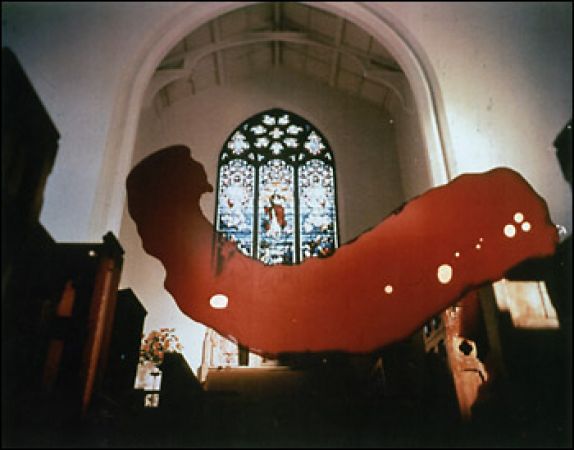 Much is made, and rightly so, of the imagery and motifs – water, broken glass, the colour red – which recur throughout the film to create an increasing sense of foreboding. (Pictured right: a still from Don't Look Now.) Although much of this was obviously carefully worked out before the film was shot, Roeg was not slavishly tied to the script. “You must be open to change,” he says. “If you have a scene you were planning to shoot on a sunny day and it’s raining, one kind of film-maker would say, 'Luckily we’ve got those standby scenes in case the weather wasn’t good – let’s go and shoot in the studio,' but I would say, 'Come on, let’s get the camera out. Let’s see what we can do with this.' It’s like that scene in The Treasure of Sienna Madre, where the Humphrey Bogart character says, 'What are you doing, you fool? This is where the gold is – it’s not up on the mountain, this is where it is.'"
Much is made, and rightly so, of the imagery and motifs – water, broken glass, the colour red – which recur throughout the film to create an increasing sense of foreboding. (Pictured right: a still from Don't Look Now.) Although much of this was obviously carefully worked out before the film was shot, Roeg was not slavishly tied to the script. “You must be open to change,” he says. “If you have a scene you were planning to shoot on a sunny day and it’s raining, one kind of film-maker would say, 'Luckily we’ve got those standby scenes in case the weather wasn’t good – let’s go and shoot in the studio,' but I would say, 'Come on, let’s get the camera out. Let’s see what we can do with this.' It’s like that scene in The Treasure of Sienna Madre, where the Humphrey Bogart character says, 'What are you doing, you fool? This is where the gold is – it’s not up on the mountain, this is where it is.'"
One example of this happening in Don’t Look Now is a scene in a church with Christie and Sutherland which had originally consisted of four pages of script. The crew was getting ready to shoot when Roeg overheard Sutherland tell Christie that he didn’t like the church. "Don’t be ridiculous,” replied Christie, tersely. “It’s a beautiful church."
"Those two lines summed the situation up between the two characters perfectly, so we used those in the film, rather than the script,” explains Roeg. “Some people get rooted in having to do things a particular way, but I’ve never felt there’s a wrong or a right way. It’s just an attitude in life although it goes against the grain of the film business because they think, oh, no! What is he going to do now?”
It was, however, a tricky shoot. “I always say that Venice is a trap because it’s beautiful and unique but as with everything, that beauty and uniqueness only lasts a certain amount of time. It was also difficult because we could only shoot at certain places at certain times because of the tides and getting the equipment under those bridges.
“There’s a saying that if it’s a happy shoot there’ll be something wrong with the movie and I think that’s basically true. Everyone is so equal, the crew and everybody, and their lives are so stretched. It’s an amazing thing, a film crew. It’s like a little intimate society. It’s a bit like a gold rush town – you set it up and then it vanishes as if it never existed.”
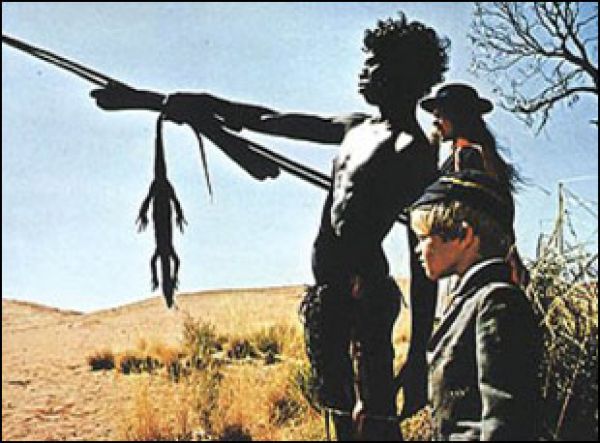 With hindsight, Don’t Look Now is generally considered to be part of a golden period for Roeg which included Performance and Walkabout, Bad Timing (1980) and Eureka (1983). (Pictured left: David Gulpilil, Jenny Agutter and Luc Roeg in Walkabout.) Since then he has continued to make films with varying degrees of success – his last feature, Puffball (2007), received a critical panning – although they are often, like his earlier films, rediscovered and acclaimed by audiences years after their release. I wondered how he felt about his films being vilified or – even worse – ignored and then acquiring cult status several years on.
With hindsight, Don’t Look Now is generally considered to be part of a golden period for Roeg which included Performance and Walkabout, Bad Timing (1980) and Eureka (1983). (Pictured left: David Gulpilil, Jenny Agutter and Luc Roeg in Walkabout.) Since then he has continued to make films with varying degrees of success – his last feature, Puffball (2007), received a critical panning – although they are often, like his earlier films, rediscovered and acclaimed by audiences years after their release. I wondered how he felt about his films being vilified or – even worse – ignored and then acquiring cult status several years on.
“Oh, it’s lovely,” he beams, “because at least they still have a life. Sometimes things get gradually discovered along the line. And I like it when people tell me, like you told me about Bad Timing, that it still affected you after all these years. It’s all to do with truth and sometimes the truth is quite hidden and you don’t realise it at the time.”
Explore topics
Share this article
Add comment
The future of Arts Journalism
You can stop theartsdesk.com closing!
We urgently need financing to survive. Our fundraising drive has thus far raised £49,000 but we need to reach £100,000 or we will be forced to close. Please contribute here: https://gofund.me/c3f6033d
And if you can forward this information to anyone who might assist, we’d be grateful.

Subscribe to theartsdesk.com
Thank you for continuing to read our work on theartsdesk.com. For unlimited access to every article in its entirety, including our archive of more than 15,000 pieces, we're asking for £5 per month or £40 per year. We feel it's a very good deal, and hope you do too.
To take a subscription now simply click here.
And if you're looking for that extra gift for a friend or family member, why not treat them to a theartsdesk.com gift subscription?
more Film
 Blu-ray: Wendy and Lucy
Down-and-out in rural Oregon: Kelly Reichardt's third feature packs a huge punch
Blu-ray: Wendy and Lucy
Down-and-out in rural Oregon: Kelly Reichardt's third feature packs a huge punch
 The Mastermind review - another slim but nourishing slice of Americana from Kelly Reichardt
Josh O'Connor is perfect casting as a cocky middle-class American adrift in the 1970s
The Mastermind review - another slim but nourishing slice of Americana from Kelly Reichardt
Josh O'Connor is perfect casting as a cocky middle-class American adrift in the 1970s
 Springsteen: Deliver Me From Nowhere review - the story of the Boss who isn't boss of his own head
A brooding trip on the Bruce Springsteen highway of hard knocks
Springsteen: Deliver Me From Nowhere review - the story of the Boss who isn't boss of his own head
A brooding trip on the Bruce Springsteen highway of hard knocks
 The Perfect Neighbor, Netflix review - Florida found-footage documentary is a harrowing watch
Sundance winner chronicles a death that should have been prevented
The Perfect Neighbor, Netflix review - Florida found-footage documentary is a harrowing watch
Sundance winner chronicles a death that should have been prevented
 Blu-ray: Le Quai des Brumes
Love twinkles in the gloom of Marcel Carné’s fogbound French poetic realist classic
Blu-ray: Le Quai des Brumes
Love twinkles in the gloom of Marcel Carné’s fogbound French poetic realist classic
 Frankenstein review - the Prometheus of the charnel house
Guillermo del Toro is fitfully inspired, but often lost in long-held ambitions
Frankenstein review - the Prometheus of the charnel house
Guillermo del Toro is fitfully inspired, but often lost in long-held ambitions
 London Film Festival 2025 - a Korean masterclass in black comedy and a Camus classic effectively realised
New films from Park Chan-wook, Gianfranco Rosi, François Ozon, Ildikó Enyedi and more
London Film Festival 2025 - a Korean masterclass in black comedy and a Camus classic effectively realised
New films from Park Chan-wook, Gianfranco Rosi, François Ozon, Ildikó Enyedi and more
 After the Hunt review - muddled #MeToo provocation
Julia Roberts excels despite misfiring drama
After the Hunt review - muddled #MeToo provocation
Julia Roberts excels despite misfiring drama
 London Film Festival 2025 - Bradley Cooper channels John Bishop, the Boss goes to Nebraska, and a French pandemic
... not to mention Kristen Stewart's directing debut and a punchy prison drama
London Film Festival 2025 - Bradley Cooper channels John Bishop, the Boss goes to Nebraska, and a French pandemic
... not to mention Kristen Stewart's directing debut and a punchy prison drama
 Ballad of a Small Player review - Colin Farrell's all in as a gambler down on his luck
Conclave director Edward Berger swaps the Vatican for Asia's sin city
Ballad of a Small Player review - Colin Farrell's all in as a gambler down on his luck
Conclave director Edward Berger swaps the Vatican for Asia's sin city
 London Film Festival 2025 - from paranoia in Brazil and Iran, to light relief in New York and Tuscany
'Jay Kelly' disappoints, 'It Was Just an Accident' doesn't
London Film Festival 2025 - from paranoia in Brazil and Iran, to light relief in New York and Tuscany
'Jay Kelly' disappoints, 'It Was Just an Accident' doesn't
 Iron Ladies review - working-class heroines of the Miners' Strike
Documentary salutes the staunch women who fought Thatcher's pit closures
Iron Ladies review - working-class heroines of the Miners' Strike
Documentary salutes the staunch women who fought Thatcher's pit closures

Comments
...
...